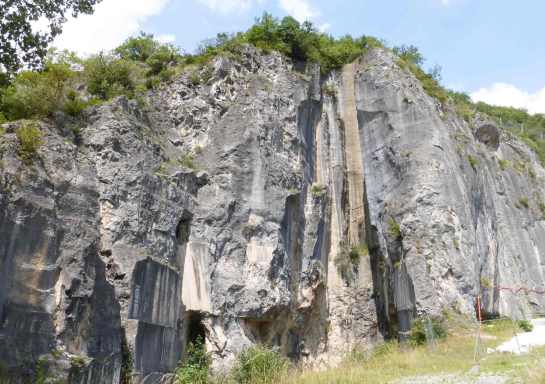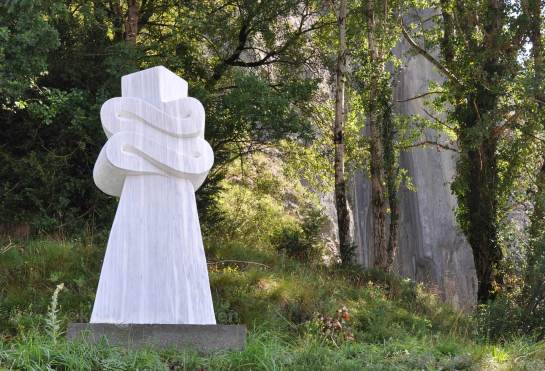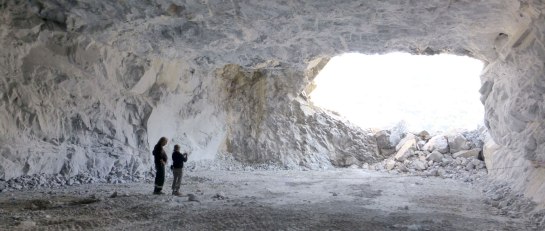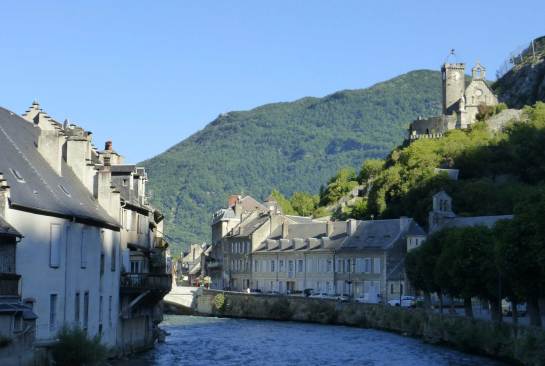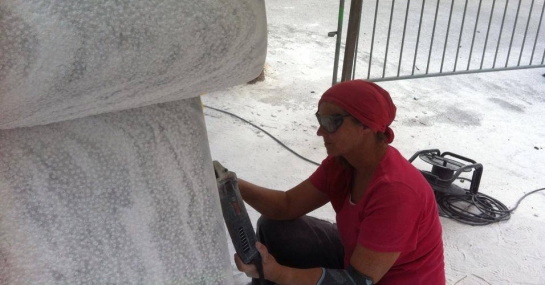When you come into Saint-Béat, you can find the “Brèche Romaine”, an old quarry that dates back to the time of the Romans. The story tells that in this quarry the “Monolith of Lez” has been carved out. A column of almost 30 meters that was meant to become the Column of Trajan. But the column never arrived in Rome and probably stayed in Lez, the nearest town.
But if you take a close look at the quarry you still can find the traces.
My sculpture “The Monolith” , made of marble of Saint-Béat, is placed next to the “Brèche Romaine”
